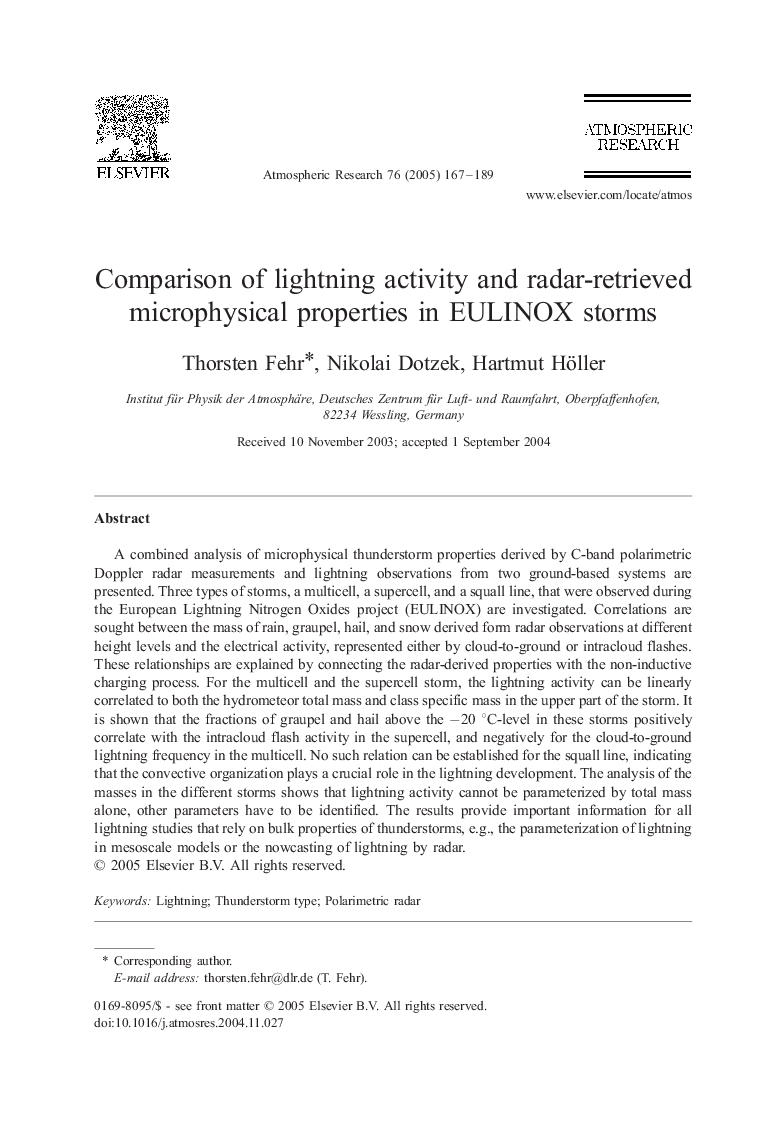| Article ID | Journal | Published Year | Pages | File Type |
|---|---|---|---|---|
| 9459794 | Atmospheric Research | 2005 | 23 Pages |
Abstract
A combined analysis of microphysical thunderstorm properties derived by C-band polarimetric Doppler radar measurements and lightning observations from two ground-based systems are presented. Three types of storms, a multicell, a supercell, and a squall line, that were observed during the European Lightning Nitrogen Oxides project (EULINOX) are investigated. Correlations are sought between the mass of rain, graupel, hail, and snow derived form radar observations at different height levels and the electrical activity, represented either by cloud-to-ground or intracloud flashes. These relationships are explained by connecting the radar-derived properties with the non-inductive charging process. For the multicell and the supercell storm, the lightning activity can be linearly correlated to both the hydrometeor total mass and class specific mass in the upper part of the storm. It is shown that the fractions of graupel and hail above the â20 °C-level in these storms positively correlate with the intracloud flash activity in the supercell, and negatively for the cloud-to-ground lightning frequency in the multicell. No such relation can be established for the squall line, indicating that the convective organization plays a crucial role in the lightning development. The analysis of the masses in the different storms shows that lightning activity cannot be parameterized by total mass alone, other parameters have to be identified. The results provide important information for all lightning studies that rely on bulk properties of thunderstorms, e.g., the parameterization of lightning in mesoscale models or the nowcasting of lightning by radar.
Keywords
Related Topics
Physical Sciences and Engineering
Earth and Planetary Sciences
Atmospheric Science
Authors
Thorsten Fehr, Nikolai Dotzek, Hartmut Höller,
